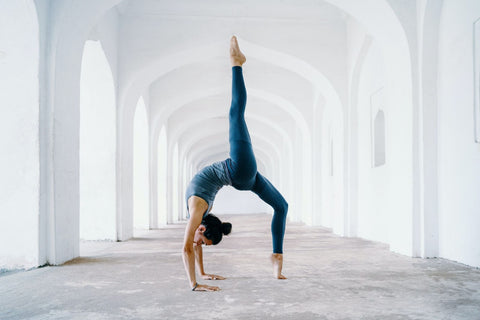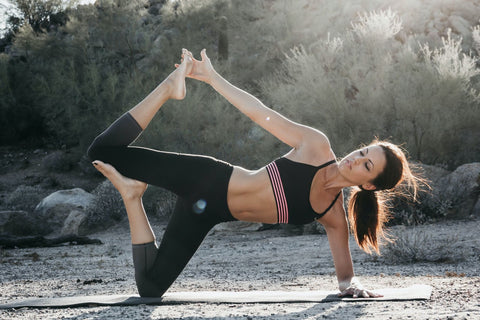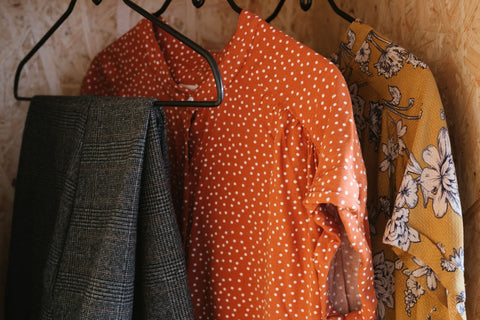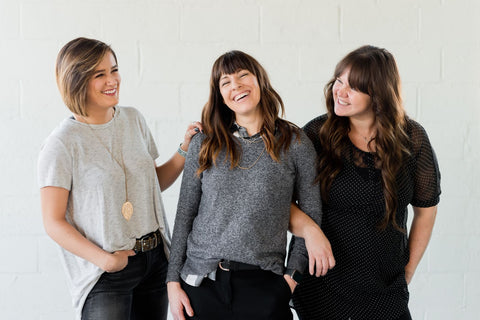
There are plenty of yoga poses that require tremendous strength and flexibility. Fortunately you don’t need to dive right into these advanced moves in order for yoga to make a profound difference in your life.
You can reap incredible rewards, from improved strength and flexibility, to a slimmer waistline and increased focus, from a routine comprised entirely of “beginner” moves. These yoga poses for beginners don’t require advanced fitness, fancy equipment or time in a studio, but they do require practice in order to be performed properly.
Below you’ll find critical yoga poses for beginners, how to perform them and how to eliminate common issues so you can begin to benefit from the first time you climb on the mat.
Child’s Pose

The child’s pose is where most great yoga routines begin. This pose begins to open up your hips, elongates the spine and prepares your body and mind for the more active poses that will follow.
The issue that most people run into with the child’s pose stems from tight hips caused by extended bouts of sitting. Mastering the child’s pose can usually be accomplished through focus by staying mindful of proper breathing and relaxing into a wider base.
A folded towel beneath your head can make this pose more comfortable and allow you to maintain focus on breathing and stretching. Each time you practice, walk your fingers out farther to maximize the stretch in your spine and to open the hips as much as possible prior to moving onto the next pose.
Cat-Cow Pose

You can transition fluidly from child’s pose into cat-cow and continue to work on hip and spine mobility. The cat-cow pose lubricates the spine, stretches the entire posterior chain and tightens the arms, shoulders and core.
The biggest mistakes that beginning yogis make with this pose revolve around proper alignment. In order to get the most out of cat-cow, your hands need to be directly beneath the shoulders, pressed firmly into the mat. Your transition from cat to cow should be performed rhythmically; you need to maintain focus on your breathing and getting a proper stretch from your tailbone up through the spine and into your neck throughout the entire practice of this pose.
Downward Facing Dog

Once you’ve mastered cat-cow, it’s time to transition into yoga’s most recognizable pose. Downward facing dog looks simple, but it carries similar challenges to cat-cow. If your alignment is off in this pose it becomes increasingly difficult to maintain, it becomes uncomfortable quickly and will cause you to lose focus.
From the table top position, rise up from your knees and push your hips high into the air. Maintain the same width of stance (roughly shoulder width apart) and walk your feet slowly toward your hands. Keep the spine long, spread your fingers and turn your hands slightly outward to create a stable base. Push your heels into the ground and keep your hips as high as possible. Maintaining a strong base is key to mastering downward facing dog.
Low Lunge

Low lunge is an outstanding pose that further opens up the hips, elongates the spine and strengthens the entire body. It does however bring forth another challenge - maintaining balance.
In addition to proper breathing, keeping the body aligned and maintaining mindfulness - you’ll also need to keep yourself from toppling over in this wide based pose. What beginners fail to realize though, is that yoga is referred to as “practice” for a reason; we all face challenges during every single session, after all, you need challenges to grow.
You don’t need to dive right into the deepest low lunge. In fact, doing so could lead to injury. In order to master this posture, you might need to make use of your surroundings until you develop the strength and stability necessary to complete it without assistance.
Perform the low lunge facing a wall where you can maintain contact with your front foot throughout. Use blocks or keep your hands down by your sides to get into position, until you’ve established a solid base, and again to transition into your next pose.
Hold the low lunge for sixty seconds, using assistance when necessary. After several sessions you should be able get into, hold and transition from the low lunge into your next pose with fluidity.
Mastering these four yoga moves will build a strong foundation of strength and flexibility. Once you’ve got these beginner poses down you can perform them in the morning to prepare you for the day, after work to melt away stress or as part of a longer and more complex practice to further improve your physical and mental health and wellness.






